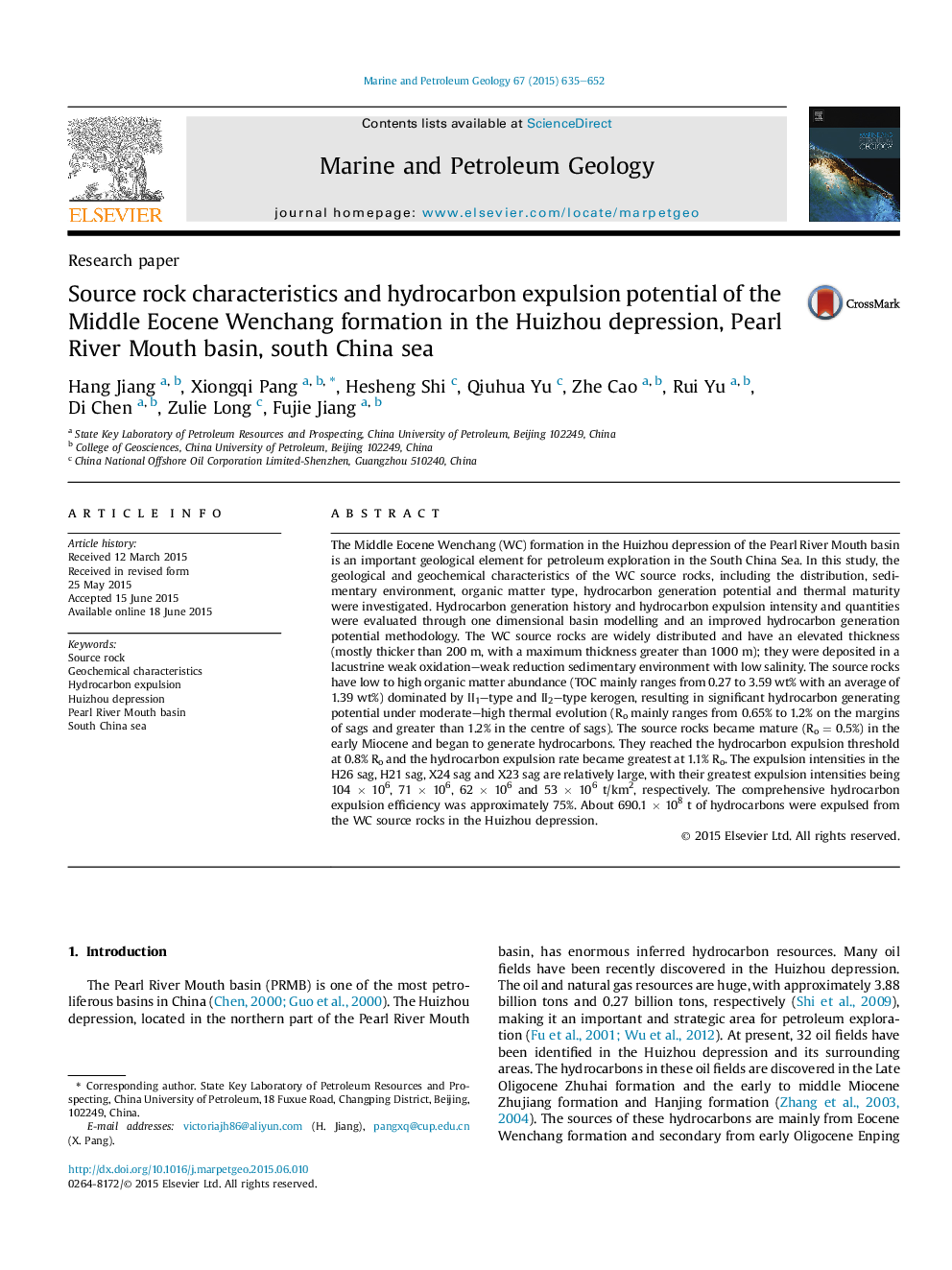| کد مقاله | کد نشریه | سال انتشار | مقاله انگلیسی | نسخه تمام متن |
|---|---|---|---|---|
| 6434967 | 1637159 | 2015 | 18 صفحه PDF | دانلود رایگان |

- WC organic-rich formation has fair to good hydrocarbon-generative potential.
- The organic matter is predominantly types II1 and II2 kerogen.
- WC formation was deposited in a weak oxidation-weak reduction lacustrine environment with low salinity.
- Oil expulsion began at 0.8%Ro and the peak expulsion occurred at 1.1% Ro.
- The total expelled hydrocarbon quantities are 719.8Â ÃÂ 108Â t.
The Middle Eocene Wenchang (WC) formation in the Huizhou depression of the Pearl River Mouth basin is an important geological element for petroleum exploration in the South China Sea. In this study, the geological and geochemical characteristics of the WC source rocks, including the distribution, sedimentary environment, organic matter type, hydrocarbon generation potential and thermal maturity were investigated. Hydrocarbon generation history and hydrocarbon expulsion intensity and quantities were evaluated through one dimensional basin modelling and an improved hydrocarbon generation potential methodology. The WC source rocks are widely distributed and have an elevated thickness (mostly thicker than 200 m, with a maximum thickness greater than 1000 m); they were deposited in a lacustrine weak oxidation-weak reduction sedimentary environment with low salinity. The source rocks have low to high organic matter abundance (TOC mainly ranges from 0.27 to 3.59 wt% with an average of 1.39 wt%) dominated by II1-type and II2-type kerogen, resulting in significant hydrocarbon generating potential under moderate-high thermal evolution (Ro mainly ranges from 0.65% to 1.2% on the margins of sags and greater than 1.2% in the centre of sags). The source rocks became mature (Ro = 0.5%) in the early Miocene and began to generate hydrocarbons. They reached the hydrocarbon expulsion threshold at 0.8% Ro and the hydrocarbon expulsion rate became greatest at 1.1% Ro. The expulsion intensities in the H26 sag, H21 sag, X24 sag and X23 sag are relatively large, with their greatest expulsion intensities being 104 Ã 106, 71 Ã 106, 62 Ã 106 and 53 Ã 106 t/km2, respectively. The comprehensive hydrocarbon expulsion efficiency was approximately 75%. About 690.1 Ã 108 t of hydrocarbons were expulsed from the WC source rocks in the Huizhou depression.
Journal: Marine and Petroleum Geology - Volume 67, November 2015, Pages 635-652